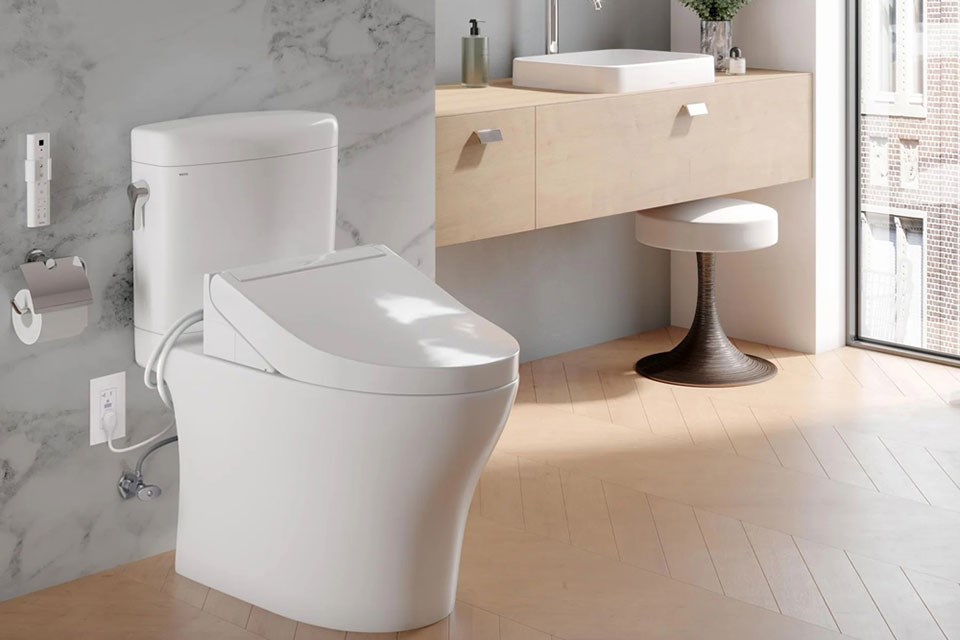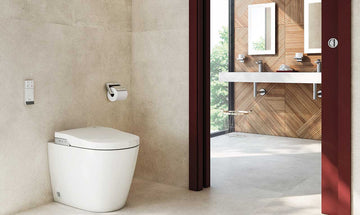In the realm of bathroom technology, toilets with integrated dryers represent a groundbreaking advancement. These modern marvels are designed to enhance both convenience and hygiene, offering a luxurious experience that is becoming increasingly appealing in various sectors, including residential homes and public facilities. The rise of such innovative toilets heralds a shift towards more sustainable and hygienic bathroom solutions.

Why Consider Toilets with Integrated Dryers?
The primary allure of toilets with integrated dryers is their ability to provide a comprehensive cleaning process. These toilets eliminate the need for toilet paper by incorporating a drying mechanism after cleansing. This feature not only saves on paper waste but also enhances personal hygiene. For the Industry QA audience, understanding the benefits of such systems can lead to better decision-making in both product development and quality assurance.
Moreover, these toilets cater to a growing demand for innovative toilet solutions that address the needs of individuals with disabilities or limited mobility, offering them greater independence and dignity.
Technological Features and Benefits
Modern toilets with integrated dryers come equipped with a variety of features that enhance user experience. These include adjustable water pressure, temperature controls, and air drying settings. Some models even feature built-in deodorizers and night lights. Such features make these toilets not just functional but also a luxurious addition to any bathroom.
The technological prowess of these toilets extends to their environmental impact as well. By reducing reliance on toilet paper, they contribute to a more sustainable future. This aligns with the goals of many industries looking to reduce their ecological footprint and adhere to innovative toilet standards.
Installation and Maintenance
When considering these advanced toilets, it's crucial for Industry QA professionals to assess installation and maintenance aspects. While the initial setup may require a higher investment compared to traditional toilets, the long-term benefits and savings on toilet paper can offset these costs. Regular maintenance involves checking the dryer and cleaning nozzles to ensure optimal performance.
For a deeper understanding of how these systems work, exploring resources on toilet innovation can provide valuable insights.
Adoption in Different Sectors
The adoption of toilets with integrated dryers is on the rise across various sectors. In hospitality, these toilets offer guests a premium experience, while in healthcare, they support patient autonomy and hygiene. Public spaces are also beginning to incorporate these toilets, recognizing their potential to enhance user satisfaction and reduce maintenance costs.
Industries focused on water-efficient toilets also find these integrated systems appealing due to their reduced water usage and paper waste.
Challenges and Considerations
Despite their numerous advantages, there are challenges associated with the adoption of toilets with integrated dryers. These include the initial cost of purchase and installation, as well as the need for regular maintenance. For Industry QA professionals, understanding these challenges is vital in ensuring that products meet quality standards and provide lasting value to consumers.
Evaluating these factors against the backdrop of evolving consumer expectations and technological advancements is critical for staying ahead in the competitive market.
Conclusion
As we look towards the future of bathroom technology, toilets with integrated dryers stand out as a pivotal innovation. They embody the intersection of convenience, hygiene, and sustainability, offering benefits that resonate with both consumers and industries. For those in Industry QA, staying informed about these advancements is essential for fostering innovation and maintaining high standards in product offerings.
For further reading on the future of bathroom technology, visit this insightful blog.

FAQ
What are the benefits of toilets with integrated dryers?
These toilets offer enhanced hygiene, reduce paper waste, and provide a more comfortable user experience. They are particularly beneficial for individuals with mobility issues.
Are there any downsides to using these toilets?
The main challenges include the higher initial cost and the need for regular maintenance. However, the long-term benefits often outweigh these concerns.
How do integrated dryers contribute to sustainability?
By reducing the use of toilet paper and incorporating features that minimize water usage, these toilets contribute to a more sustainable and eco-friendly environment.
This article contains affiliate links. We may earn a commission at no extra cost to you.






